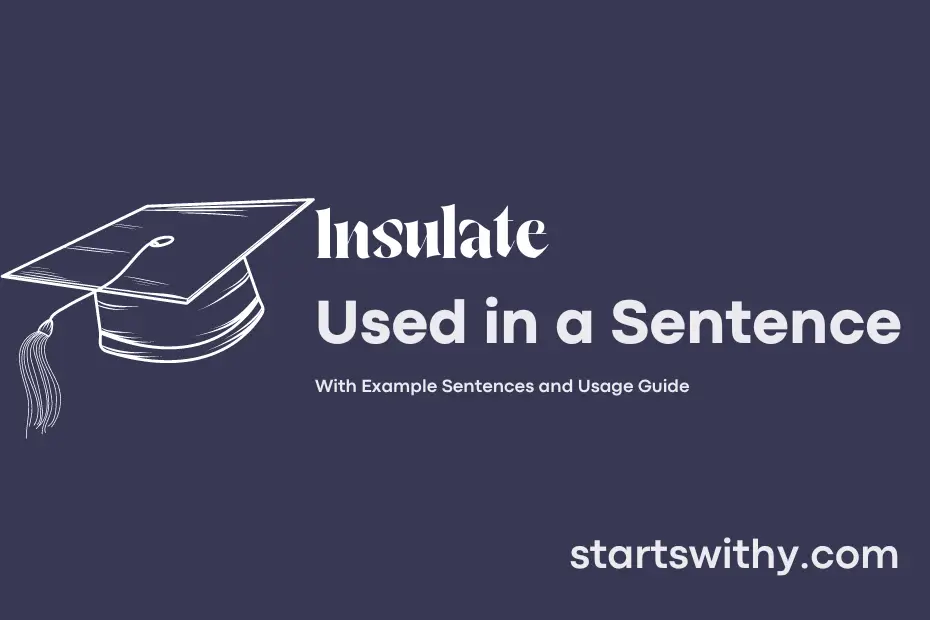Have you ever wondered how to effectively shield something from external influences or keep it separate from others? This process is known as insulating.
Insulating involves creating a barrier or protective layer to maintain a desired temperature, block out sound, or prevent electrical conductivity.
7 Examples Of Insulate Used In a Sentence For Kids
- Insulate means to protect from the cold.
- We use jackets to insulate ourselves in winter.
- Blankets help to insulate us while we sleep.
- Igloos are built to insulate people from the freezing temperatures.
- Animals have fur to insulate them from the weather.
- Our houses have walls that insulate them from outside heat.
- Insulate helps keep us warm and cozy.
14 Sentences with Insulate Examples
- Make sure to insulate your room properly during winter to keep the cold air out.
- It is important to insulate your water bottle to keep your drink hot or cold for longer.
- Don’t forget to insulate your food properly to keep it fresh until lunchtime.
- Use a insulated lunch box to keep your meals warm and tasty.
- Insulate your study area from distractions to help you focus better on your studies.
- Consider using insulated curtains to keep the heat out during the hot summer months.
- A good way to save energy is to insulate your windows and doors properly.
- Insulate your electronics from dust and moisture to prolong their lifespan.
- Consider wearing insulating layers to keep warm during late-night study sessions.
- Use an insulated water jug to keep yourself hydrated throughout the day.
- Make sure to insulate your laptop bag to protect your device from sudden impacts.
- A good quality insulated backpack can keep your snacks fresh and ready to eat.
- Insulate your study materials by organizing them in folders or binders.
- To stay comfortable during long lectures, consider wearing insulated socks to keep your feet warm.
How To Use Insulate in Sentences?
To use Insulate properly in a sentence, start by identifying the subject or object that needs to be protected from the outside elements. This can be anything from a house to a water pipe.
Next, determine how you want to convey the idea of providing protection or insulation. For example, you could say “The homeowners decided to insulate their attic to keep their house warm during the winter months.” In this sentence, “insulate” is used to describe the action of adding insulation to the attic.
Another way to use Insulate is to describe the material or method used for insulation. For example, “They used fiberglass batts to insulate the walls of the building.” In this sentence, “insulate” is used to explain the process of adding insulation using fiberglass batts.
Remember to place Insulate in a sentence where it makes sense grammatically and communicates the intended meaning clearly. Practice using Insulate in different contexts to become more comfortable incorporating it into your writing or conversation.
Conclusion
In conclusion, insulating a home is vital for maintaining consistent indoor temperatures and reducing energy costs. By installing proper insulation in walls, attics, and floors, homeowners can create a barrier that helps regulate heat flow and keeps their living spaces comfortable throughout the year. Insulated buildings are also more energy-efficient, leading to lower utility bills and reduced environmental impact.
Effective insulation is key in controlling thermal comfort and optimizing energy efficiency. Whether using materials like fiberglass, spray foam, or cellulose, well-insulated homes offer better protection against heat or cold transfer, ultimately enhancing occupants’ living conditions and saving money in the long run. Prioritizing insulation is a practical way to improve home energy efficiency and overall comfort.



